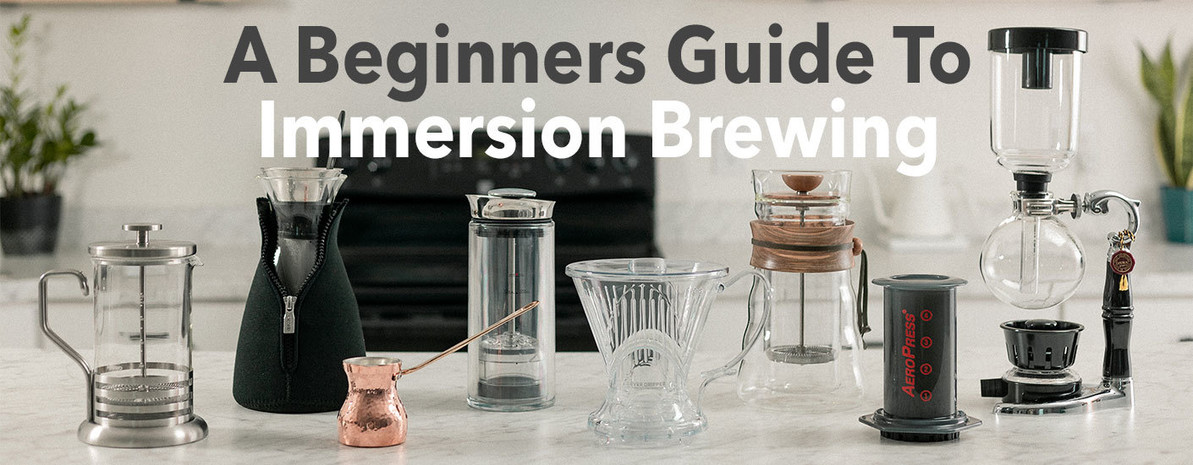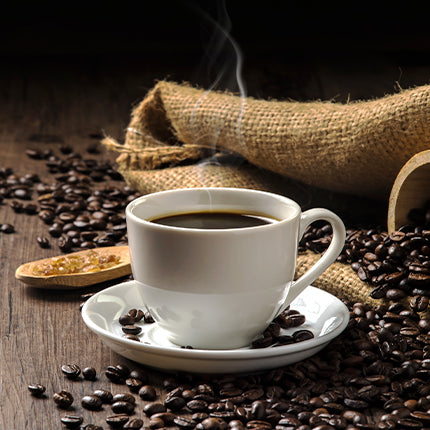The Science Behind Coffee Brewing: How Temperature and Time Affect Your Beverage
Understanding the science behind coffee developing discloses that temperature level and time are not mere variables yet critical elements that determine the drink's flavor account and general high quality. The ideal brewing temperature level typically drops in between 195 ° F and 205 ° F, while the period of extraction differs significantly across various techniques. This interplay of elements can lead to a cup that is either unsatisfactory or fascinating. As we discover the subtleties of these components, the concern occurs: how can one properly balance temperature and time to achieve that perfect brew?
The Chemistry of Coffee Removal
The chemistry of coffee extraction looks into the complex processes that transform raw coffee beans into the aromatic beverage appreciated worldwide. This transformation mostly involves the solubility of numerous substances existing in the beans, which are influenced by variables such as work size, water top quality, and the brewing technique utilized.
During the developing procedure, hot water serves as a solvent, removing soluble substances, consisting of caffeine, sugars, lipids, and acids, from the coffee premises. Each compound adds to the flavor profile, scent, and body of the last drink. For instance, acids are liable for bright and appetizing notes, while oils add to an abundant mouthfeel.
The first stages of developing essence acids and sugars, leading to a positive level of acidity, while prolonged extraction can lead to resentment due to over-extraction of undesirable substances. Recognizing these chemical interactions is crucial for enhancing developing techniques, as the equilibrium between removal time and water temperature level can dramatically influence the total top quality of the coffee.
Perfect Brewing Temperatures
Discovering the right developing temperature level is essential for unlocking the complete potential of coffee tastes and scents - coffee brewing methods. Research indicates that the optimal array for developing coffee lies between 195 ° F to 205 ° F(90 ° C to 96 ° C) Within this range, the removal procedure efficiently dissolves the preferable soluble substances in coffee beans, leading to a well balanced and flavorful cup
Developing at lower temperature levels, such as below 195 ° F(90 ° C ), may lead to under-extraction, generating an acidic and weak brew with soft tastes. Alternatively, developing at temperature levels exceeding 205 ° F(96 ° C) can cause over-extraction, generating a bitter and rough taste because of the excessive dissolution of undesirable compounds, such as tannins.
Moreover, the excellent brewing temperature level can differ relying on the coffee bean kind and roast degree. As an example, lighter roasts commonly gain from somewhat greater temperature levels to enhance their complicated flavor profiles, while darker roasts may be much better matched to lower temperature levels to reduce resentment.
Eventually, preserving accuracy in brewing temperature levels is critical for achieving an unified equilibrium of tastes, guaranteeing that every mug of coffee provides a satisfying sensory experience.
Impact of Developing Time
Brewing time plays an essential function in determining the taste account and general top quality of coffee. Shorter developing times can result in under-extraction, leading to a sour or weak flavor, as not adequate soluble substances are liquified.
Optimum brewing time varies relying on the method made use of and the work size of the coffee. As an example, a French press commonly calls for regarding four minutes, while espresso removal is normally completed within 25 to try this web-site 30 seconds. It is important to calibrate brewing time in combination with other variables, such as water temperature level and coffee-to-water proportion, to achieve the desired flavor profile.
Recognizing the influence of brewing time makes it possible for coffee lovers to fine-tune their brewing strategies, ultimately improving the sensory experience of their mug (coffee brewing methods). With cautious interest to this variable, one can unlock the full possibility of the coffee, revealing its special characteristics and subtleties
Developing Techniques and Their Impacts

As an example, approaches like French press and chilly mixture permit for a much longer steeping time, resulting in a fuller body and click durable flavor due to enhanced removal of oils and soluble solids. Conversely, coffee brewing utilizes high stress and a shorter removal time, generating a focused shot that stresses extreme flavors and a rich crema.
Pour-over techniques, such as Chemex or V60, offer a more controlled removal procedure, allowing the brewer to manipulate circulation price and water circulation, which can boost brightness and clarity. Percolation techniques cycle water through the coffee premises numerous times, leading to a more powerful, often bitter flavor.
Lastly, the usage of paper filters versus steel filters can additionally influence the last preference; paper filters usually generate a cleaner mug by capturing oils and fine fragments, while steel filters enable more oils to pass through, adding to a fuller mouthfeel - coffee brewing methods. Comprehending these nuances can elevate the coffee experience significantly
Tips for Developing Your Mixture
A well-executed brew can transform also the easiest coffee into an impressive experience. Grind the beans just prior to brewing to make best use of freshness, making certain the grind dimension matches your brewing approach-- coarser for French press and finer for espresso.
Water high quality plays an important role; use filteringed system water without impurities. The suitable brewing temperature varies between 195 ° F and 205 ° F(90 ° C to 96 ° C ) Also hot can swelter the coffee, while too amazing might under-extract flavors.
Timing is just as important. For immersion techniques, soaking for three to five minutes is optimum, whereas drip methods commonly take around five mins. Trying out brew times to find your recommended strength.

Final Thought
In summary, the complex my latest blog post partnership in between temperature level and time is extremely important in the coffee developing procedure. Following optimum developing temperature levels in between 195 ° F and 205 ° F, together with accurate timing tailored to every method, guarantees the preferred flavor profile is accomplished. Understanding these scientific concepts encourages people to fine-tune their brewing techniques, ultimately bring about an extra well balanced and delightful coffee experience. Proficiency of these elements is important for any coffee enthusiast looking for quality in their beverage.
Recognizing the scientific research behind coffee developing discloses that temperature and time are not plain variables yet pivotal elements that dictate the drink's flavor account and total high quality. Understanding these chemical communications is important for optimizing developing techniques, as the balance in between extraction time and water temperature level can substantially influence the general quality of the coffee.Developing time plays a crucial function in determining the taste account and general top quality of coffee. By focusing on these elements-- bean high quality, grind size, water temperature, soaking time, and ratio-- you can raise your coffee developing process, resulting in a consistently premium cup.
In recap, the detailed connection in between temperature level and time is critical in the coffee developing process.